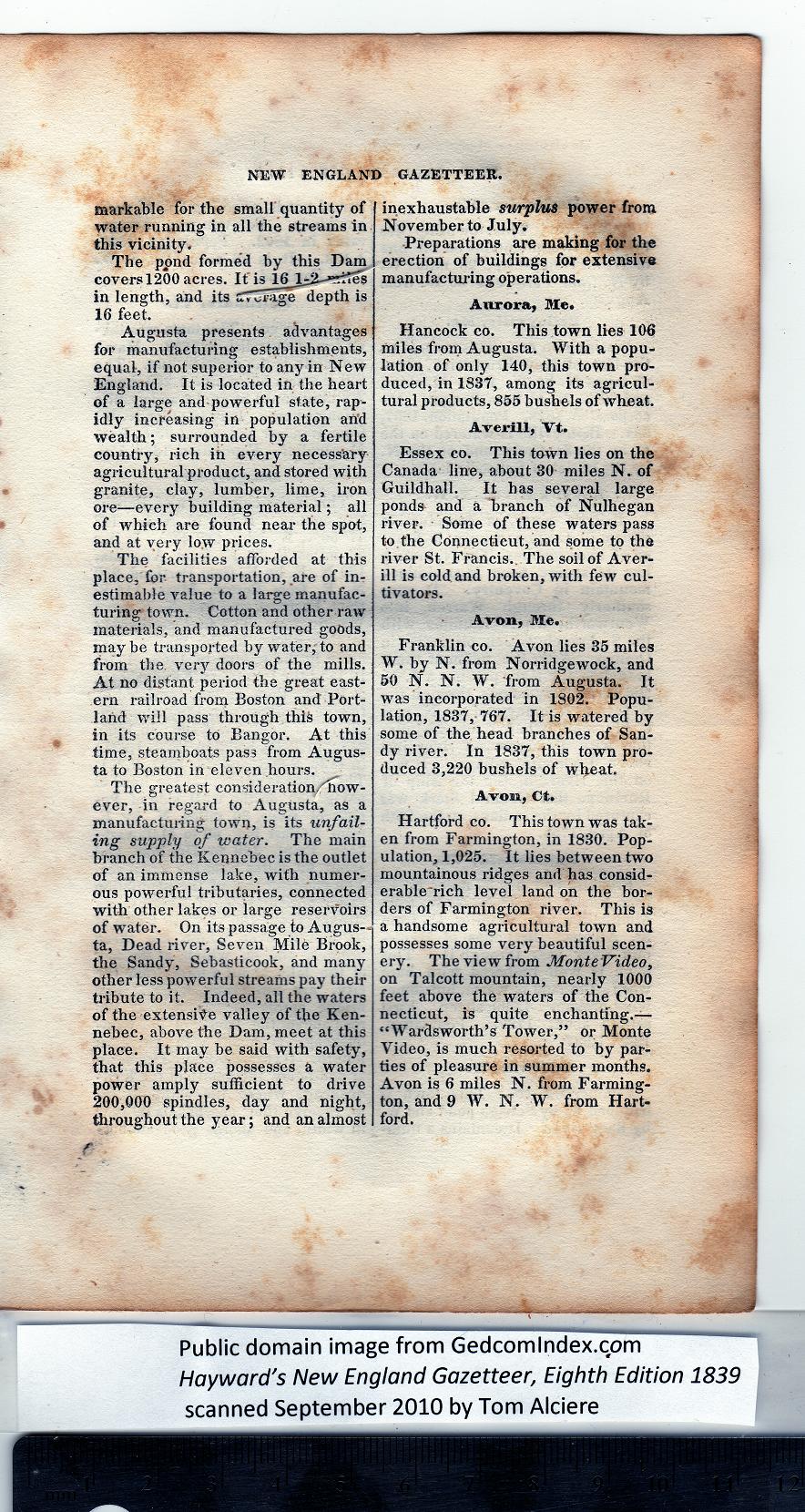|
markable for the small quantity of
water running in all the streams in
this vicinity.
The pjmd formed by this Dam
covers 1200 acres. If is 16 L^t^riTes
in length, and its cTThiage depth is
16 feet.
Augusta presents advantages
for manufacturing establishments,
equal, if not superior to any in New
England. It is located in the heart
of a large and powerful state, rap-
idly increasing in population and
wealth; surrounded by a fertile
country, rich in every necessary
agricultural product, and stored with
granite, clay, lumber, lime, iron
ore—every building material; all
of which are found near the spot,
and at very low prices.
The facilities afforded at this
place, for transportation, are of in-
estimable value to a large manufac-
turing town. Cotton and other raw
materials, and manufactured goods,
maybe transported by water, to and
from the. very doors of the mills.
At no distant period the great east-
ern railroad from Boston and Port-
land will pass through this town,
in its course to Bangor. At this
time, steamboats pass from Augus-
ta to Boston in eleven hours.
The greatest consideration/how-
ever, in regard to Augusta, as a
manufacturing town, is its unfail-
ing supply of water. The main
branch of the Kennehec is the outlet
of an immense lake, with numer-
ous powerful tributaries, connected
with other lakes or large reservoirs
of water. On its passage to Augus-
ta, Dead river, Seven Mile Brook,
the Sandy, Sebasticook, and many
other less powerful streams pay their
tribute to it. Indeed, all the waters
of the extensile valley of the Ken-
nebec, above the Dam, meet at this
place. It may be said with safety,
that this place possesses a water
power amply sufficient to drive
200,000 spindles, day and night,
throughout the year; and an almost
inexhaustable surplus power from
November to July. |
Preparations are making for the
erection of buildings for extensive
manufacturing operations.
Aurora, Me*
Hancock co. This town lies 106
miles from Augusta. With a popu-
lation of only 140, this town pro-
duced, in 1837, among its agricul-
tural products, 855 bushels of wheat.
Averill, Vt.
Essex co. This town lies on the
Canada line, about 30 miles N. of
Guildhall. It has several large
ponds and a branch of Nulhegan
river. Some of these waters pass
to the Connecticut, and some to the
river St. Francis. The soil of Aver-
ill is cold and broken, with few cul-
tivators.
Avon, Me.
Franklin co. Avon lies 35 miles
W. by N. from Norridgewock, and
50 N. N. W. from Augusta. It
was incorporated in 1802. Popu-
lation, 1837, 767. It is watered by
some of the head branches of San-
dy river. In 1837, this town pro-
duced 3,220 bushels of wheat.
Avon, Ct.
Hartford co. This town was tak-
en from Farmington, in 1830. Pop-
ulation, 1,025. It lies between two
mountainous ridges and has consid-
erahle'rich level land on the bor-
ders of Farmington river. This is
a handsome agricultural town and
possesses some very beautiful scen-
ery. The view from Montevideo,
on Talcott mountain, nearly 1000
feet above the waters of the Con-
necticut, is quite enchanting.—
“Wardsworth’s Tower,” or Monte
Video, is much resorted to by par-
ties of pleasure in summer months.
Avon is 6 miles N. from Farming-
ton, and 9 W. N. W. from Hart-
ford. |
